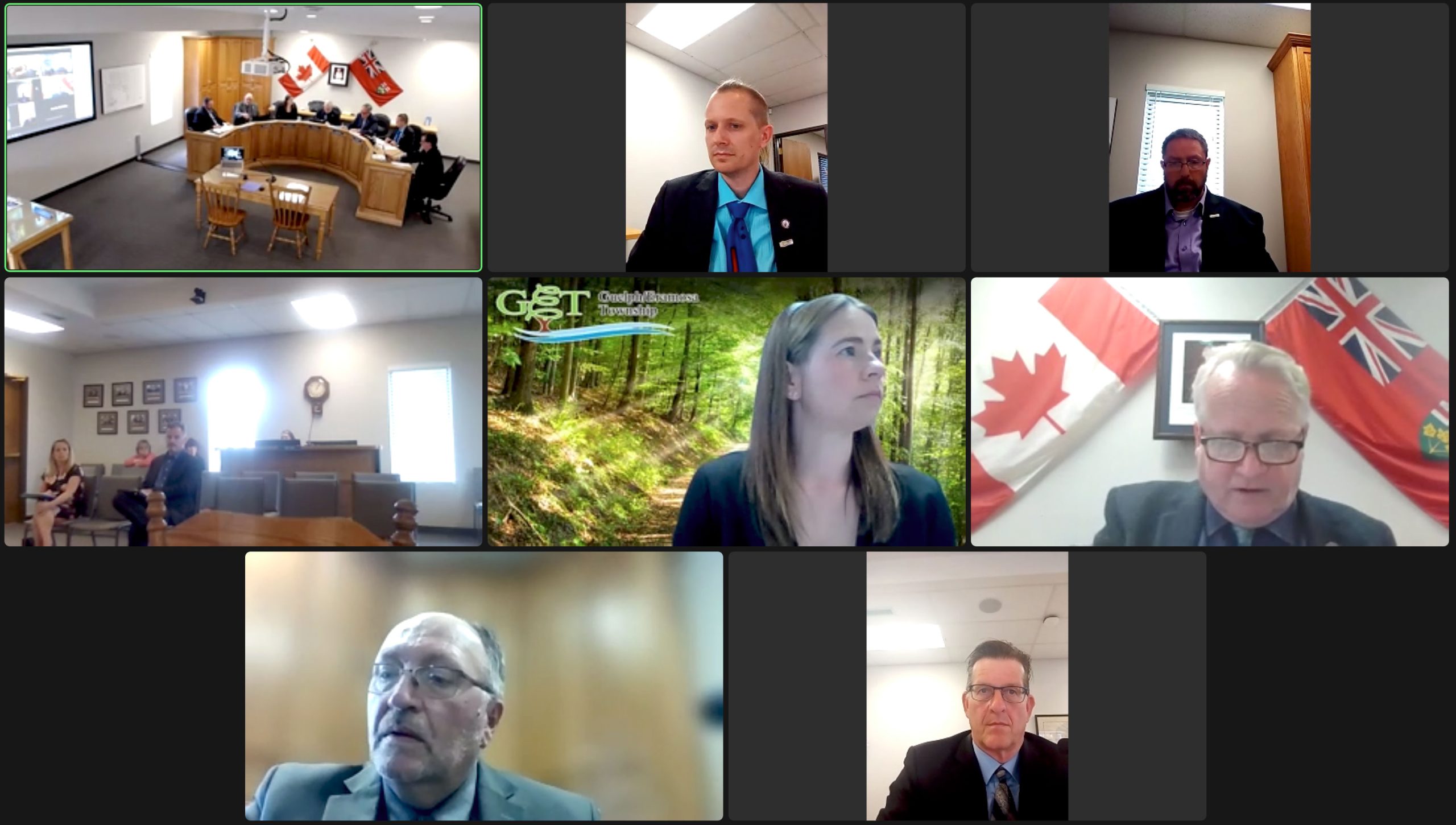GUELPH/ERAMOSA – Council here has turned down a motion to reduce the speed limit on two residential streets in Rockwood.
Councillor Mark Bouwmeester introduced a notice of motion on May 2 asking council to consider the idea of a pilot project to lower the speed limit from 50 to 40km/h along the entire length of MacLennan and Dunbar Streets.
“The fact that you could drive your kid to school at Harris Mill, for example, and drive the same rate of speed on MacLennan Street, a residential subdivision street, the exact same rate of speed as you can on the provincial highway, to me that’s just crazy,” Bouwmeester said at the May 16 council meeting.
“And it’s a bit of a missed opportunity not to adjust that.”
On Monday councillors discussed and voted on the motion, with councillors Steven Liebig and Bouwmeester in favour and councillors Bruce Dickieson and Corey Woods and Mayor Chris White opposed.
Bouwmeester said he picked the particular streets for the pilot project after a recent traffic calming report brought to council identified the 85th percentile speed on those roads was 50km/h or above.
“So the pilot, it’s sort of a bet. My bet is drop it to 40 [and] I think the prevailing speed will go down,” Bouwmeester said.
“That’s my opinion … So I’m asking for a test or a trial.”
He added, “And I know as we all do, this is just one piece of the puzzle – the actual limits – there’s all kinds of other tools in the toolbox, this is just one of them.
“This is just a continuation of the trying to make things safer.”
Woods referred to speeding as an “endemic problem,” noting all councillors receive their fair share of complaints, but he also referenced his motto that all areas should be equal.
“I don’t necessarily agree with one specific street being a 40,” he said. “I think maybe the broader question is, should all residential zones be a 40?
“If we’re going to treat everybody fairly, if you’re in a residential zone you should all be the same speed.”
Dickieson noted that whatever the township sets as the speed limit, it can’t control those who drive faster, adding a posted speed limit of 50km/h is fine.
Voicing his support for the motion, Liebig said he spent a morning driving various speeds down MacLennan and Dunbar streets.
Having been with the fire department for over 30 years and witnessing tragedies firsthand, he said, “there’s no need for something to happen once, not to say that it will, but again, there’s no need for it.
“Driving [51km/h] is way too much on those streets with the kids going up and down … or any residential street,” he added.
White recognized speeding is one of the number one complaints councillors receive, but he noted reducing a street from 50 to 40km/h would make little difference.
“The issue isn’t a 50 to 40, the issue is the people doing 80,” he said. “When you drop a 50 to a 40, the people doing 80 aren’t all of a sudden going to start doing 40.”
“I still get as many complaints off the 40 as you do the 50 because the people are … still doing 70 and 80.”
White added enforcement is critical and shouldn’t be considered as the last resort.
“I think there’s a recognition on this council, that traffic and speeding are a concern and a growing concern,” he stressed.
The mayor said he’d like to see council move in the direction of doing a full investigation of the photo radar signs to find out if that’s an option, as well as declaring specific areas community safety zones.
“Even if you did drop down the speed, it’s still a matter of enforcement, it’s not a solution,” White reiterated. “Frankly, it’s a bit of a false hope …
“My concern is that if you’re going to adjust the speed, it’ll make very little difference, but there will be the sense that you’ve got some success that isn’t bearing out.”
Recognizing that mitigation measures are needed to address speeding in the township, White recommended council give direction to staff to look at making MacLennan and Dunbar pilot projects for a photo radar system.




